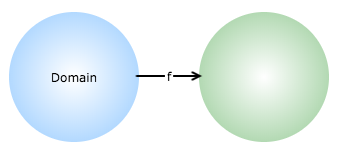1. Probability & Distribution
1.1 Introduction
Definition
- Statistical(random) experiment.
- The outcome can not be predicted with certainly prior to the performance of experiment.
- Sample space.
- Collection of every possible outcome from the random1 experiment and denoted \(\mathscr{C}\).
- Event.
- Subset of
Sample spaceand denoted by A, B, C\(\cdots\).
- Subset of
ex 1.1) Consider tossing a coin, then \(\mathscr{C}=\left\{\text{H, T}\right\}\).
ex 1.2) Consider tossing two dice(one red, the other white), then \(\mathscr{C}=\left\{\left(1, 1\right)\cdots\left(6,6\right)\right\}\)
ex 1.3) Consider sum seven when tossing two dice, then \(\mathscr{C}=\left\{\left(1, 6\right), \left(2, 5\right), \cdots \left(6, 1\right)\right\}\)
Remark 1.1
Two types of probability.
1.2 Set Theory
Definition 1.2.1
- If each element of set \(C_1\) is also an element of set \(C_2\), then \(C_1\) is called subset of \(C_2\), and denoted by \(C_1\subset C_2\).
Definition 1.2.2
- If a set \(C\) has no elements, tehn \(C\) is called the NULL(empty) set, and denoted by \(C=\varnothing\).
Definition 1.2.3
- The set of all elements that belong to at least \(C_1\) or \(C_2\) is called the union of \(C_1\) and \(C_2\), and denoted by \(C_1\cup C_2\).
- It can be generalized to any number of sets \(C_1\cup C_2 \cup \cdots : =\bigcup_{k=1}^\infty C_k\)
ex 1.2.7)
\[\begin{aligned} C_k = & \left\{x:\frac{1}{k+1}\le x\le1\right\},\quad k=1,2,3,\cdots \\ \Rightarrow & \bigcup_{k=1}^{\infty}C_k = \left\{x: 0 \lt x\le 1\right\} \end{aligned}\]
Definition 1.2.4
- The set of all elements that belong to each of \(C_1\) and \(C_2\) is called the intersection of \(C_1\) and \(C_2\), and denoted by \(C_1\cap C_2\).
- It can be generalized to any number of sets \(C_1\cap C_2 \cap \cdots := \bigcap_{k=1}^\infty C_k\)
ex 1.2.11)
\[\begin{aligned} C_k = & \left\{x:0\lt x\lt \frac{1}{k}\right\} \\ \Rightarrow & \bigcap_{k=1}^{\infty}C_k = \varnothing \end{aligned}\]
Definition 1.2.6
- Let \(C \subset \mathscr{C}\), then the set that consists of all element of \(\mathscr{C}\), that are not elements of \(C\) is called the complements of \(C\), and denoted by \(C^c, \overline{C}\).

A function is called point or set function. Its domain is point or set respectively.

하단의 수식이 렌더링이 되질 않아서… 스크린샷도 첨부.
ex 1.2.24)
\[\begin{aligned} Q\left(c\right)=\underbrace{\int\cdots\int_{0}^{x_2}}_{\text{n times folded}} d_{x1}d_{x2}\cdots dx_n \\ \end{aligned}\]if
\(\begin{aligned} C=\left\{\left(x_1, x_2,\dots, x_n\right): 0\le x_1\le x_2 \le \cdots\le x_n \le 1\right\} \end{aligned}\) then
\[\begin{aligned} Q\left(C\right) =& \int_0^1\int_0^{x_n}\cdots\int_0^{x_3}\int_0^{x_2}dx_1dx_2\cdots dx_{n-1}dx_n \\ = & \frac{1}{n!}, \end{aligned}\]